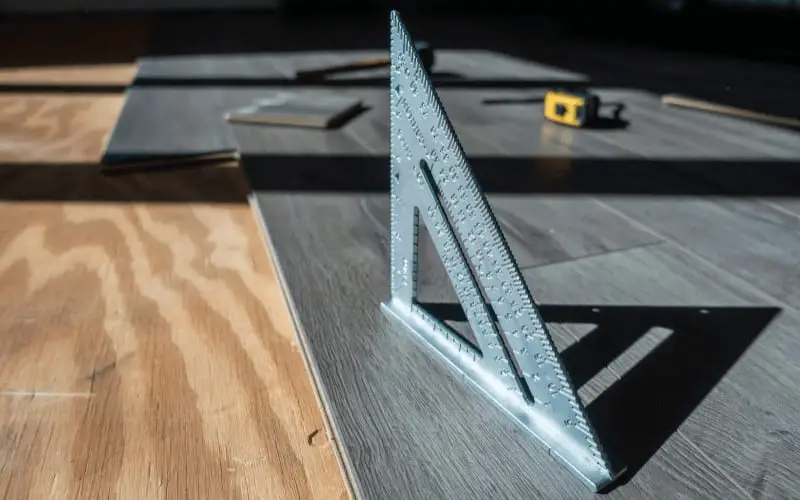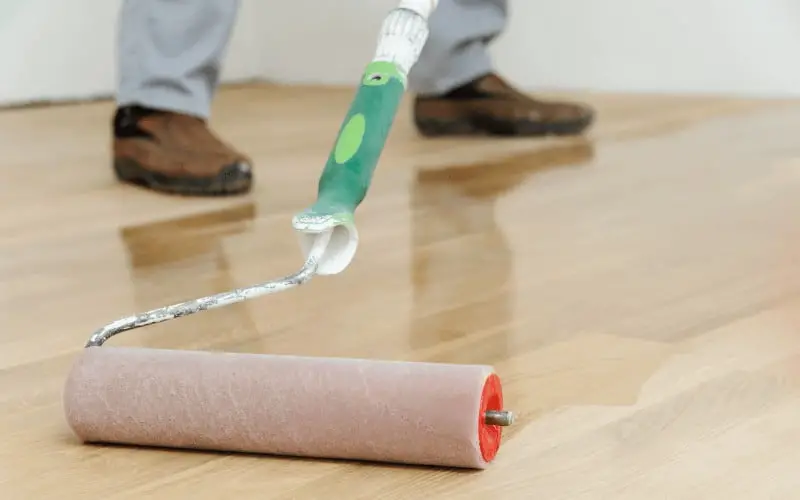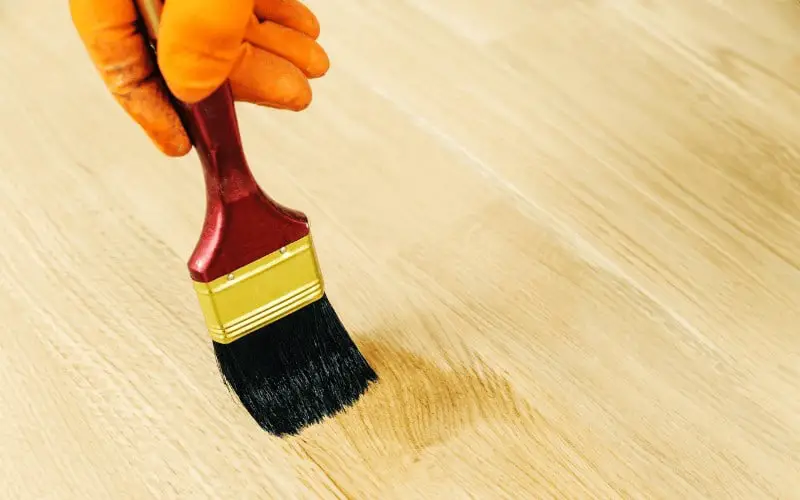Engineered hardwood floors are a cheaper alternative to hardwood but they don’t look it. They are basically hardwood floors at a cheaper cost, but that comes at a cost, can engineered hardwood floors be refinished?
Hardwood floors are known for their versatility and ability to withstand series of refinishing but can that be said for its “look-alike” engineered floor?
Majority of engineered hardwood floors can actually be refinished multiple times but the number of times it can be refinished depends on the thickness of the veneer and many other factors.
Refinishing Engineered Hardwood Floor
Table of Contents
The wear layer of an engineered hardwood floor is the layer of solid hardwood present in the floor. The thickness of this layer can range from 1mm to 8mm thick depending on the quality of the flooring.
About 75mm to 1mm of the wear layer is removed During refinishing done by an experienced hardwood floor sanding specialist.
Using the thickness level of an engineered floor you can determine how many times the engineered hardwood can be refinished and the list below gives you a better insight
| 1mm or less | Should not be refinished |
| 2mm | 1-2 |
| 2.5mm | 2-3 |
| 4mm | 4-5 |
| 6mm | 6-8 |
| 8mm | 8-10 |
As stated earlier there are a number of factors that determine the number of times an engineered hardwood floor can be refinished or if it can be refinished in the first place. These factors include;
- If you have Deep scratches or stains on your engineered hardwood floor, refinishing it might remove more of the wear layer which can be detrimental to the floor surface
- If the edges of the flooring plank have been lightly cupped due to moisture damage you might have to remove lots of floor material trying to refinish it that replacement of the plank is the best fix
- If you have Uneven floors or floor dip, replacing the plank is recommended because trying to sand a dip will cause more material to be removed in some areas which leads to an uneven floor.
Alternatives To Refinishing Engineered Hardwood Flooring
For an engineered hardwood floor that cannot be refinished or if you don’t want to refinish your there are other alternative steps you can take
If you have light wear on your engineered hardwood floor but it hasn’t penetrated the wear layer, instead of refinishing the floor, you can simply add a layer of polyurethane sealer on the floor over the existing finish.
To test if the sealer on your is still in good condition, place a few drops of water on the floor, and if the water starts to bead up, then the sealer is in good condition and you do not need to refreshen the floor’s sealant.
But if, after placing the drops of water on the floor and u notice that the surrounding surface starts to darken as the water penetrates the wood, then your floor is in need of resealing.
Depending on how much traffic your floor receives, you should try to refresh your floor’s sealant every 4-7 years. Refreshing your engineered hardwood floor’s sealant regularly costs about 25% to 33% of what it would cost to refinish the floor.
Not only is it less expensive but for some type of engineered hardwood floor like a hand-scraped floor that will be totally ruined by refinishing, refreshing the sealant is the best option.
If a few planks of your floor have been deeply scratched, stained, or dented, refinishing the entire floor is very expensive and probably won’t fix the problem.
Instead, replace the damaged planks or you can repair the scratches or dents with stainable wood filler, this is way more affordable than refinishing the entire floor.
The only downside to using wood filler is that the color of the new planks and the wood filler might not be an exact match in color to the existing floor.
Reasons To Refinish Engineered Hardwood Floor
There are only two reasons why refinishing your engineered hardwood floor might be necessary. First, when there is widespread damage on the floor or there’s a significant sign of wear through the sealer and into the wood, then refinishing your floor might be the best way to restore your floor’s appearance.
The second reason to refinish engineered hardwood flooring is when you want to change the color of stain on the wood and for this, you only have to remove about 1mm to 1.5mm of the wear layer.
How To Determine If Your Engineered Hardwood Floor Can Be Refinished
If you moved into a space where engineered hardwood floor has already been installed and you don’t know the history of the floor, before refinishing it, you will need to investigate its condition before going ahead with the process.
To get the thickness of the wear layer Remove a floor grate and this will expose the edge profile of the wood, then go ahead and measure the wear layer.
If there isn’t any floor grate present, simply find the simplest place to remove the baseboard or door trim using a small prybar to expose the edge. You can also slip a dental mirror tool into the space between the edge of the flooring and the wall if possible to view the wear layer.
You can also contact a flooring contractor if you are unsure about the issue, and they will be able to assist you in determining whether your engineered hardwood floor can be refinished or if refreshing your floor’s sealant is the right option.
Conclusion
Due to the fact that engineered hardwood floors aren’t considered “original” hardwood floor. Most people tend to wonder if can engineered hardwood floors be refinished? fortunately, the answer is yes but if you can refinish your particular engineered floor depends on a couple of different factors.


